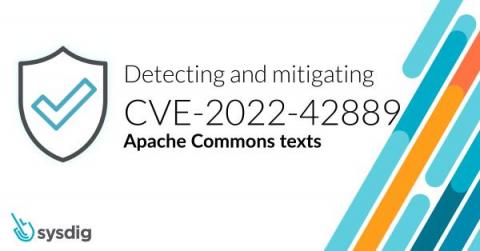Detecting and mitigating CVE-2022-42889 a.k.a. Text4shell
A new critical vulnerability CVE-2022-42889 a.k.a Text4shell, similar to the old Spring4shell and log4shell, was originally reported by Alvaro Muñoz on the very popular Apache Commons Text library. The vulnerability is rated as a critical 9.8 severity and it is always a remote code execution (RCE) which would permit attackers to execute arbitrary code on the machine and compromise the entire host.











